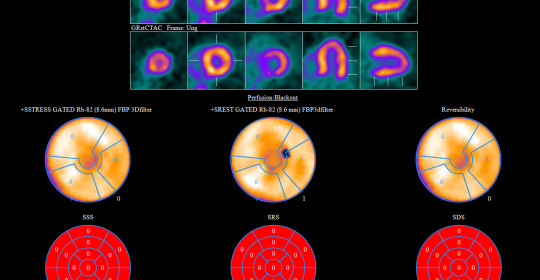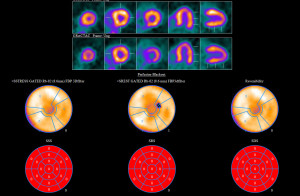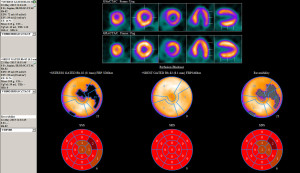
Rb-82 PET/CT Facilitates Higher Diagnostic Accuracy in CAD
Early and accurate diagnosis of coronary artery disease (CAD) has never been more important, and University of Cincinnati Medical Center enhanced its own diagnostic capability by adding cardiac positron emission tomography (PET) with CT attenuation correction using rubidium-82 (Rb-82) in December 2014. The medical center has been using cardiac PET with a nitrogen-13 ammonia as the tracer since 2010. Cardiac PET is considered the diagnostic gold standard of noninvasive ischemic evaluation, avoiding the limitations (including the difficulty of use in large patients and false positives) of the more widely-used conventional single-photon emission computed tomography (SPECT) imaging.
According to Robert O’Donnell, MD, MSc, associate professor of clinical medicine, “PET provides more information in a shorter time at a lower dose of radiation than with SPECT.” He further states there is prognostic as well as diagnostic value, helping clinicians evaluate the severity of CAD in real time, which can affect treatment courses and potentially improve outcomes.
University of Cincinnati Medical Center uses special software to measure the patient’s myocardial flow reserve (MFR), a new technology that provides additional prognostic information and is not available with SPECT. Recent technological improvements to PET imaging equipment, combined with the availability of this software, create a novel opportunity to provide clinically relevant quantitative information to cardiologists.1 O’Donnell points out that cardiac PET technology is constantly evolving, with the first PET-only conference occurring only last year through the American Society of Nuclear Cardiology (ASNC). A number of tracer agents are available, including Rb-82 and nitrogen-13 ammonia, as well as a new fluorine-18-based tracer that is being tested and is expected to reach the market next year. This new agent will feature a longer half-life, and make exercise stress testing more practical. The shorter half-life of rubidium-82, however, has enabled a far briefer test, requiring the patient to participate for only 30 minutes.1
Director of Nuclear Medicine Services, Judy Hughes, also emphasizes that rubidium does not need to be manufactured in a cyclotron, but is produced by a rubidium generator, which is kept onsite at the facility and replaced every five weeks. This offers clinicians a great advantage by allowing them to perform cardiac PET whenever the need arises, without relying on an outside supplier. Only 3.5% of facilities nationwide have their own rubidium generator onsite.
In addition to the advantages of an onsite generator, a lower radiation dose, increased patient comfort, and fewer false positives, O’Donnell also points out that cardiac PET with Rb-82 “is a very time-effective test, providing results that I can relay to the referring physician quickly.” The images provide examples of abnormal (Figure A) and normal perfusion studies with Rb-82 PET-CT (Figure B). In the future, O’Donnell looks forward to improvements in the MFR measurement software, further increasing the prognostic value of cardiac PET testing on a patient-by-patient basis.
Reference: 1. Sunderland JJ, Pan XB, Declerck J, Menda Y. Dependency of cardiac rubidium-82 imaging quantitative measures on age, gender, vascular territory, and software in a cardiovascular normal population. J Nucl Cardiol. 2015 Feb;22(1):72-84.
Figure A: Stress/rest Rb-82 PET-CT demonstrates decreased perfusion in the anterior and lateral segments at stress (slices top row) with normal rest perfusion (slices second row), consistent with ischemia. In addition to the perfusion abnormality, there is a decrease in left ventricular ejection fraction at stress compared to rest concerning for multi-vessel coronary artery disease (data available on gray bar to left of images).
Figure B: Stress/rest Rb-82 PET-CT in a patient with normal stress (slices top row) and rest (slices second row) perfusion.
Robert O’Donnell MD, MSc
Associate Professor of Clinical Medicine
Division of Cardiovascular Health and Disease
Medical Director, Ambulatory Care and Integrated Imaging
Medical Director, Cardiovascular MRI
(513) 558-3129
odonnert@UCMAIL.UC.EDU


